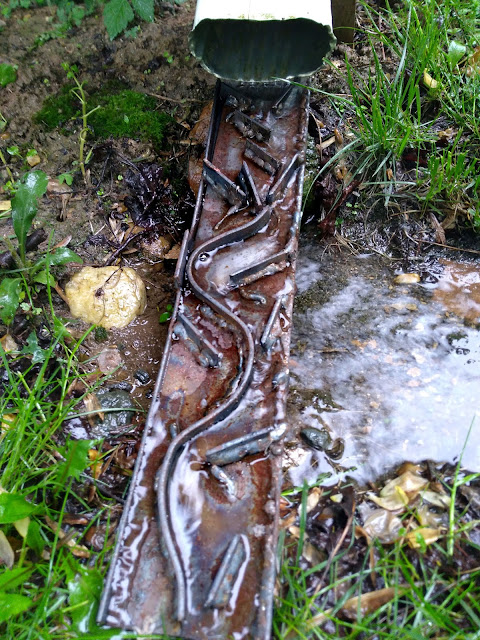I wanted to add some visual interest at a downspout that can be seen from the main entrance. And I wanted to disperse the water in a gentler pattern to prevent erosion.
In the past, I've created splash pads with rocks and channeled it with gnarled, hollowed out tree branches. This time I wanted to use metal.
It worked well for an indoor fountain. However, the scale was so small that the water's movement remained fairly constant and the repetition caused me to lose interest. I wanted constantly changing visual patterns and sounds.
I went back and added textures and sluices to help vary the pattern. They helped, but not enough.
So I tried the fountain outdoors. I hoped the wind would change the motion enough to keep the fountain interesting. Gentle breezes did change up the pattern of the water flow. But anything more than a gentle breeze blew the water off the face of the fountain.
I tried tilting the fountain to 45 degrees. That kept the water on the metal in most conditions, but it also changed the piece from a fountain to more of a cascade. And it looked very odd having a slab of metal suspended in the air at a diagonal.
I thought about embedding the angled version into a miniature landscape, but that started to seem like a lot of work.
 |
| You can see how the splash block fountain spreads the water over a larger area to prevent the erosion. |
Then I noticed that one of the downspouts was starting to create a ditch. "Why not put that so called fountain at the downspout," I thought. And I did.
I like the way it looks, and the openings along the edge let the water drain across a wider area. The visual appeal is increased because the volume of water exiting the downspout varies constantly. These random fluctuations make the water choose different paths around the gates and curves.


No comments:
Post a Comment